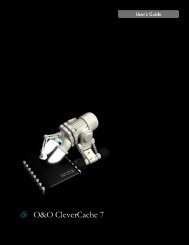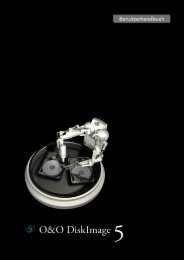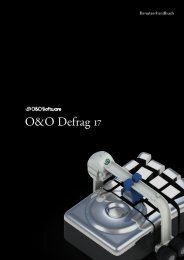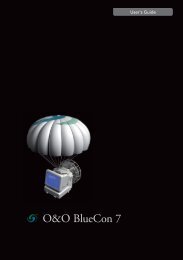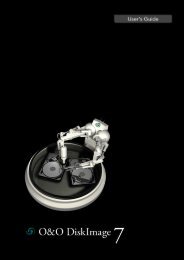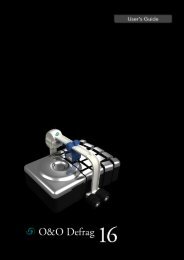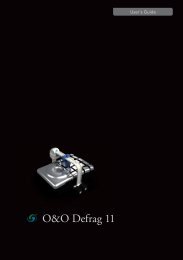O&O Defrag 17 User's Guide - O&O Software
O&O Defrag 17 User's Guide - O&O Software
O&O Defrag 17 User's Guide - O&O Software
You also want an ePaper? Increase the reach of your titles
YUMPU automatically turns print PDFs into web optimized ePapers that Google loves.
Getting startedThe COMPLETE method is particularly suitable for databases and file servers. It is important to bear in mind that thismethod requires quite a lot of main memory due to file reorganization. If this is likely to be a serious problem for yoursystem, we recommend you use the STEALTH or SPACE methods.AlgorithmFiles are sorted according to the date on which they were last changed. The files which have not been changedrecently are placed at the beginning of the partition and those recently changed are placed at the end. This option is agood one for file or database servers containing files that have never been changed (e.g. system files), but whereothers, on account of their size or content, are frequently modified. (e.g., database files)This strategy means that future defragmentation will require the least amount of time, as only a few files need to bechecked and defragmented.Recommended ApplicationIf you want to use the COMPLETE/Modified method for your regular defragmentation runs, you should bear in mind thatyou only use this method on your drive. Combining various methods (COMPLETE, STEALTH, and SPACE) can resultin defragmentation taking much longer, as the file system would need to be reorganized each time.• Maximizes the performance for write access on servers• For regularly defragmenting your volumes• On computers that have sufficient resources available when the defragmentation takes place – CPU usage islikely to increase significantly (it is strongly recommended that you use the O&O ActivityMonitor). A largeramount of free disk space is necessary with this method.COMPLETE/Name MethodThe COMPLETE/Name method defragments your files and also reorganizes your file structure. Although this methodis slower than the STEALTH and SPACE methods, it guarantees maximum system performance when your files arebeing read.The COMPLETE/Name method is particularly suitable for system drives. It is important to bear in mind that thismethod requires quite a lot of main memory due to file reorganization. If this is likely to be a serious problem for yoursystem, we recommend you use the STEALTH or SPACE methods.AlgorithmFiles are sorted alphabetically from the beginning to the end of the partition and this leads to quick access to files in adirectory. When Windows starts up, many system files will be read in sequence from the \WINDOWS and the \WI-NDOWS\system32 directories (DLLs, system drives, etc.) and the start-up time will therefore be shorter.This method is particularly recommended for computers on which the files rarely change. This reduces the reorganizationtime that is needed for every defragmentation.Recommended ApplicationPlease bear in mind that if you use the COMPLETE/Name method for your regular defragmentation runs, it should bethe only one used on the drive. Combining various methods (COMPLETE, STEALTH, and SPACE) can result in defragmentationtaking much longer, as the file system would need to be reorganized each time.• Maximizes the performance for the read access to workstations• For regularly defragmenting your volumes• On computers that have sufficient resources available when the defragmentation takes place – CPU usage islikely to increase significantly (it is strongly recommended that you use the O&O ActivityMonitor). A largeramount of free disk space is necessary with this method.• All kinds of servers and workstationsO&O <strong>Defrag</strong> - 23



